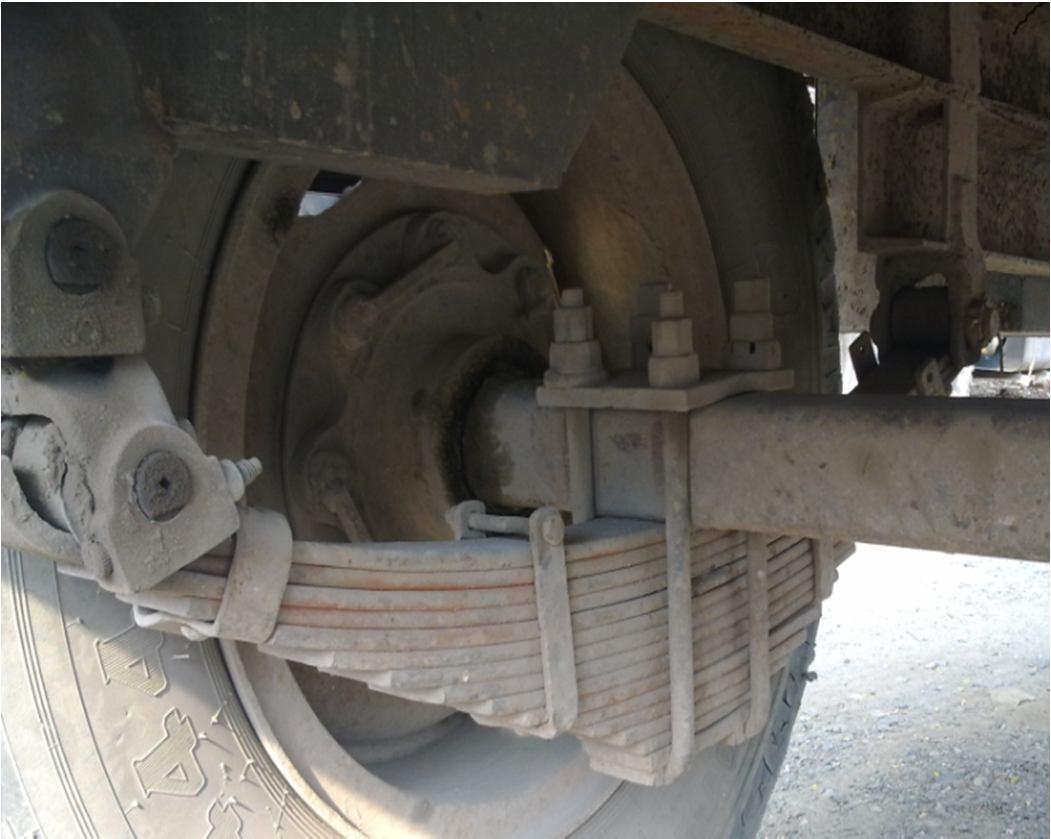
4 minute read
Design and Analysis of Leaf Spring Using Ansys
Snehal S. Besekar1 , Prof. Pranav R. Pimpalkar2 , Dr. Vinod S. Gorantiwar3
1M. Tech. Student (CAD/CAM) at Shri Sai College of Engineering& Technology Bhadrawati, Chandrapur, Maharashtra, India
Advertisement

2Prof.at Shri Sai College of Engineering & Technology Bhadrawati, Chandrapur, Maharashtra, India
3Principalat Shri Sai College of Engineering& Technology Bhadrawati, Chandrapur, Maharashtra, India
Abstract: The leaf springs are different spring styles used for automotive suspension systems. In addition to the use of energy absorption equipment, the ends of the spring can be pointed in a certain direction as it deflects as a structural function. Not primarily supporting vertical loads but isolating road-induced vibration is the principal feature of leaf spring. The present research aims at studying the safe load of the leaf spring, showing how easily an easy, safe driving speed is achieved. A standard TATA-407 light commercial vehicle leaf spring configuration is chosen. Finite element analysis for safe stresses and pay loads has been done. Conventional materials and alternative materials in spring construction used in the present work have been studied. Computer aided designing (CAD) is being widely used in different industries for product testing and manufacturing, this paper consist of design and analysis of leaf spring using ANSYS 19.2. Static structural tool has been used of ANSYS. Leaf springs are used in heavy load vehicle where load is much larger than in passenger vehicles, they are used in vehicles which are limited to varying cycles stress to millions thus eventually leads to failure of fatigue. High elastic material springs are used which possess maximum strength and fatigue effects. Weight reduction is one of the major concern while designing a vehicle as it helps in design optimization and fuel economy’s three layer composite leaf spring with full length leave. E-glass/Epoxy composite material has been used and is compared with conventional steel leaf spring. After conducting various tests it is found that eglass/epoxymaterial is better in strength and lighter in weight as contrast with conventional steel leaf spring.
I. INTRODUCTION
Increasing competition and innovation in automobile sector tends to modify the existing products or replace old products by new and advanced material products. A suspension system of vehicle is also an area where these innovations are carried out regularly. Suspension system consists of a spring and a damper. The energy of road shock causes the spring to oscillate. These oscillations are restricted to a reasonable level by the damper, which is more commonly called as shock absorber.
The primary objectives of the suspension system are:
1) To prevent the road shocks from being transmitted to the vehicles.
2) To safeguard the occupants from road shocks.
3) To preserve the stability of the vehicle in pitching or rolling, while in motion.
More efforts are taken in order to increase the comfort of user. Thus, it becomes necessary to use a good suspension springs which fulfills all the above objectives thoroughly. Further, the appropriate balance of comfort riding qualities and economy in manufacturing of spring is also becoming an obvious necessity.
The springs are placed between the road wheels and the body. When the wheel comes across a bump on the road, it rises and deflects the spring, thereby storing energy therein. On releasing, due to the elasticity of the spring material it rebounds thereby expanding the stored energy.
In this way the spring starts vibrating and with amplitude decreasing gradually on account of internal friction of the spring material and friction of the suspension joints, till vibrations die down.
A. Types Of Suspension Springs
1) Steel Springs a) Leaf Spring b) Tapered Leaf Spring c) Coil Spring d) Torsion Bar
ISSN: 2321-9653; IC Value: 45.98; SJ Impact Factor: 7.538

Volume 11 Issue III Mar 2023- Available at www.ijraset.com
2) Rubber Springs e) o Compression Spring f) o Compression – shear spring g) o Steel – reinforced spring h) o Progressive spring i) o Face shear spring j) o Torsional shear spring
3) Plastic Spring
4) Air Spring
5) Hydraulic spring.
B. Description Of Steel Leaf Spring
Here we are going to discuss only about Steel Leaf Springs as our study is based on it. Leaf springs are almost universally used for suspension in light and heavy commercial vehicles. An advantage of a leaf spring over a helical spring is that the end of the leaf spring may be guided along a definite path. Semi – Elliptic Spring takes the form of a slender arc – shaped length of spring steel of rectangular cross–section. . The center of the arc provides location for the axle, while tie holes are provided at either end for attaching to the vehicle body. For very heavy vehicles, a leaf spring can be made from several leaves stacked on top of each other in several layers, often with progressively shorter leaves. Leaf springs can serve locating and to some extent damping as well as springing functions. While the interleaf friction provides a damping action, it is not well controlled and results in stiction in the motion of the suspension. A leaf spring can either be attached directly to the frame at both ends or attached directly at one end, usually the front, with the other end attached through a shackle, a short swinging arm. The shackle takes up the tendency of the leaf spring to elongate when compressed and thus makes for softer springiness. Some springs terminated in a concave end, called a spoon end (seldom used now), to carry swiveling member. For heavy vehicles, they have the advantage of spreading the load more widely over the vehicle's chassis, whereas coil springs transfer it to a single point. Unlike coil springs, leaf springs also locate the rear axle, eliminating the need fortrailing arms and a Pan hard rod, thereby saving cost and weight in a simple live axle rear suspension.
A more modern implementation is the parabolic leaf spring. This design is characterized by fewer leaves whose thickness varies from centre to ends following a parabolic curve. In this design, inter-leaf friction is unwanted, and therefore there is only contact between the springs at the ends and at the center where the axle is connected. Spacers prevent contact at other points. Aside from a weight saving, the main advantage of parabolic springs is their greater flexibility, which translates into vehicle ride quality that approaches that of coil springs.


